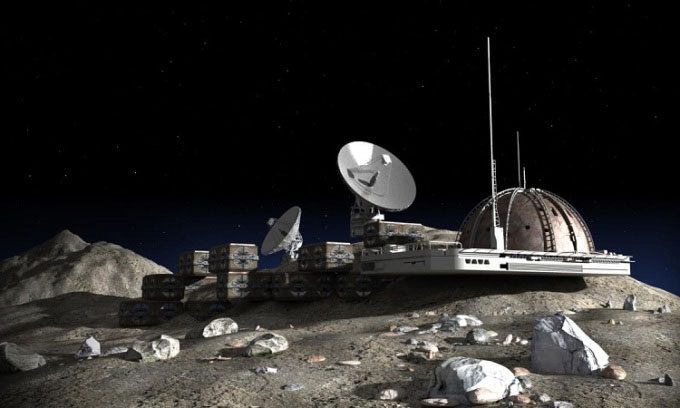Chinese space architects are designing a lunar base using volcanic caves for astronauts to stay long-term after 2035.
These underground lava tubes formed from molten rock during ancient volcanic eruptions. While the exterior of the lava flow cools and hardens quickly, the interior continues to flow, leaving behind long hollow shells. These tubes can be several kilometers long and tens of meters wide, providing natural shelter from cosmic radiation and extreme temperatures on the lunar surface.

Chinese researchers are designing a long-term lunar base. (Photo: iStock)
Lava tubes are found all over the Moon, providing locations for establishing a base in the lunar south pole, which is believed to contain abundant water ice, according to Pan Wente, an assistant professor at the Harbin Institute of Technology’s Architectural Research and Design Institute. “The lunar south pole could become crowded, and extracting water ice remains technically challenging, so we want to explore other possibilities,” Pan shared at a scientific workshop in central China last month.
The base, named “Laurel Tree,” is still in the early design phase. It will feature a pyramid-shaped structure above ground serving as an entrance, with underground sections including a central cabin, work cabins, and several living areas. The vertical central cabin will serve as the control center for the base, equipped with sophisticated equipment, and connected to the working and living areas. These two pressurized zones will have simple and quick-deploying inflatable domes due to the absence of wind on the Moon.
Concrete made from lunar rock and dust mixed with additives from Earth will be poured into the inflatable domes to create a permanent structure. Except for the central cabin, all other parts of the base will be constructed on the Moon through on-site construction or module expansion.
Due to the lack of atmosphere on the Moon, surface temperatures can fluctuate from 126 degrees Celsius to -173 degrees Celsius. The temperature variations underground are much smaller, ranging from 17 degrees Celsius to -43 degrees Celsius. The Laurel Tree base is the third lunar project for Pan and colleagues at the institute.
Both the United States, China, and Russia have plans to establish long-term bases on the Moon. China is developing a new generation of launch vehicles to land astronauts on the Moon by 2030, while the U.S. Artemis program aims to return humans to the Moon by 2025.


















































